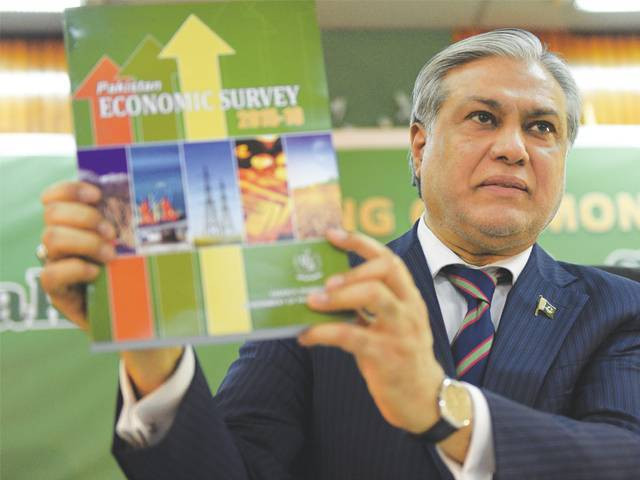Rural to urban areas: Migration increases with drop in agri-income levels
Govt should not only support agricultural sector, but also offer vocational training to migrants

Govt should not only support agricultural sector, but also offer vocational training to migrants. PHOTO: FILE
The negative growth was last observed in 2000-01. This trend is likely to have a ripple effect on the economy.
Worldwide concern over 'too many immigrants': study
According to statistics of the State Bank of Pakistan (SBP), the total crop production in rupee terms has fallen from Rs2.7 trillion in FY15 to Rs2.6 trillion in FY16.
According to the World Development Indicators, a growth of more than 10% in value addition in the agricultural sector was last reported in 1996. It has not exceeded 6% since then.
The agricultural sector contributes approximately 20% to the gross domestic product of Pakistan, employs 42% of the workforce and is a major source of revenue for the rural population.
More than 65% of the population of Pakistan resides in rural areas and relies on the production of crops, livestock, fisheries and forestry as their main source of income. A significant proportion of agricultural land is owned by a small percentage of landowners, who are mostly absentee landlords living in urban areas.
Notwithstanding a large rural population, which is likely to be either reluctant or unable to migrate, the relatively mobile rural workers may migrate to urban areas given the change in their economic and social conditions.

Although there are several reasons for rural-to-urban migration, ranging from family relocation to employment opportunities, migrants are attracted to the benefits of living in the urban areas. The appeal increases as the agricultural income level declines.
Weak commodity prices
Global prices of agricultural commodities are on a declining trend since the peak in 2011. The IMF, in its World Economic Outlook, suggests that this trend is likely to continue for the next few years.
Within 30 days Afghan refugees asked to relocate Haripur
The increasing use of synthetic substitutes in industries and higher yield seeds globally are likely to aggravate the impact of lower commodity prices on the agricultural sector in Pakistan.
According to the World Development Indicators, the urban population growth in Pakistan in 2015 is 3.3%, greater than the average of 2.7% for the South Asian region. In comparison, the rural population growth in Pakistan is 1.4%.
Considering the labour force statistics (2013-14) published by the Pakistan Bureau of Statistics (pbs), 13% of the population above the age of 10 years in Pakistan has migrated once in their lifetime.
Labour force participation is higher in rural areas than in urban areas but unemployment rates are higher in the urban areas. Even as migrants may face risks and uncertainties in working in the urban areas, higher expected wages and better living conditions are likely to attract them.

According to the Karachi Master Plan shared by the Urban Resource Centre, the population of Karachi is likely to increase to 27.5 million in 2020 and to 37 million in 2030. The population census in 1998 reported 9.9 million residents in Karachi.
The population of the city is projected to increase almost four times in 32 years and rural-to-urban migration is an important contributing factor.
As a large number of migrants are likely to be younger unskilled workers, the labour-intensive large-scale industrial manufacturers are likely to be the primary choice for employment. The alternative to such employment is the informal sector, which includes but is not limited to domestic workers, street vendors and other auxiliary services.
Such services are likely to be unregulated and involve uncertainties and risks, such as higher turnover rates, lower wages and poorer working conditions than those observed in the formal sectors.
However, some migrants may remain unemployed and engage in illegal activities that are not conducive for the economic and social environment. Industrial development in the urban areas is crucial to support the increasing rural-to-urban migration.
Job creation
As the population of Karachi is expected to surpass 27 million by 2020 and the inflow of migrants is at 1.5% of the population (assuming that the natural rate of population increases at 2%, the national estimate), Karachi will receive 400,000 new migrants every year.
Afghanistan’s Independence Day celebrated in Peshawar
As estimated in the labour force statistics of the PBS, approximately 5% of the migrants move to urban areas in search of a job (a significant proportion migrate due to relocation of family members), implying at least 20,000 new jobs will be required each year in Karachi in both the formal and informal sectors.
Although the number is a drop in the ocean relative to the total jobs required each year, it indicates the importance of viable industrial policies in urban areas just to accommodate the migrants.
First and foremost, the government must ensure the vibrancy of the agricultural sector as it provides crucial resources to the whole population. For instance, policies must ensure easier access to markets for farmers along with industrial development programmes that promote linkages with the agricultural sector.
In order to support and train migrant workers, more vocational training institutions must be set up across rural and urban areas to increase adaptability of workers across occupations.
The establishment of Technical Education and Vocational Training Authority (Tevta) in Punjab and Sindh along with non-governmental organisations, specialised in such training, is a step towards achieving higher labour participation of migrants who would otherwise remain unemployed.
The writer is an assistant professor of economics and research fellow at CBER, IBA
Published in The Express Tribune, August 29th, 2016.
Like Business on Facebook, follow @TribuneBiz on Twitter to stay informed and join in the conversation.


















COMMENTS
Comments are moderated and generally will be posted if they are on-topic and not abusive.
For more information, please see our Comments FAQ